Major Scale Positions
The major scale is one of the most important scales that a player first learns on guitar, because it’s one of the most commonly referenced in music. The major scale is a series of seven different notes identified by their fixed arrangements of intervals. The eighth note has the same letter name as the first, and is considered an octave higher.
For example, in the key of G:
1=whole step (2 frets)
1/2 =half step (1 fret)
G 1 A 1 B 1/2 C 1 D 1 E 1 F# 1/2 G
1 2 3 4 5 6 7 8 intervals
Looking at this example we see that the formula for a major scale is:
W=Whole Step H=Half Step
W-W-H-W-W-W-H
Using this formula, the chart below lists the all major keys.
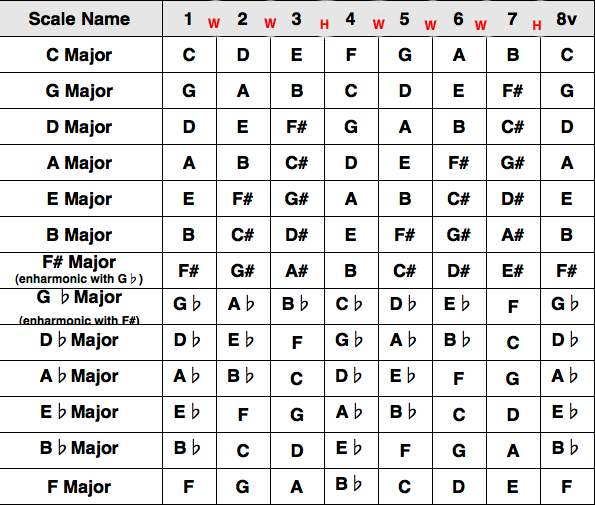
Now that we have a basic understanding of the major keys, lets learn these notes all over the neck. The major scale is broken down into 5 positions that will cover the entire fretboard. Together these positions will give you all the available major scale notes on the guitar in any key. We will be using the key of G while learning the major scale positions.
G A B C D E F#
Pos. 1 Pos. 2 Pos. 3 Pos. 4 Pos. 5
Position one starts on the root note G (root note highlighted in red)
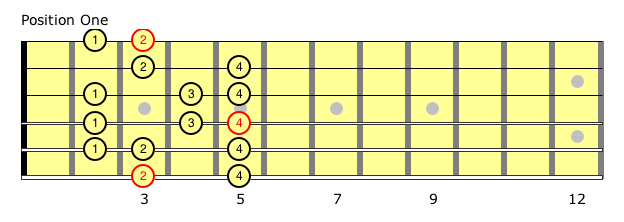

Position two starts on the 2nd note (2) of the scale “A”
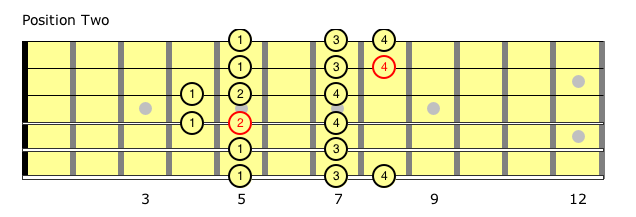
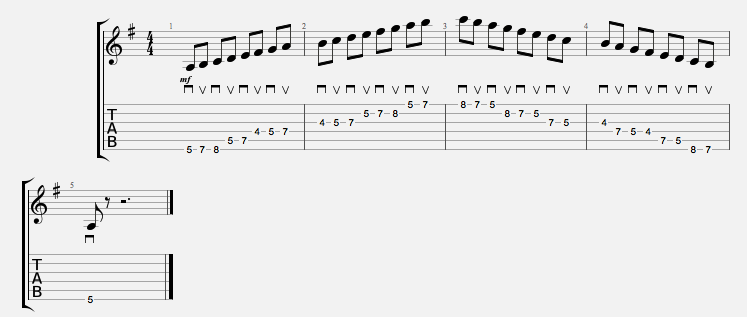
Position three starts on the 3rd note (3) of the scale “B”
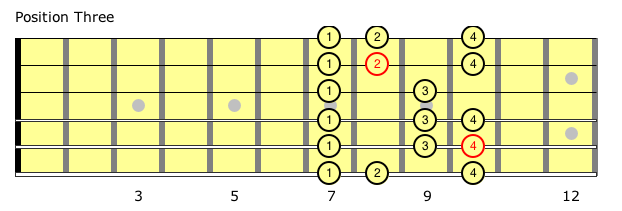
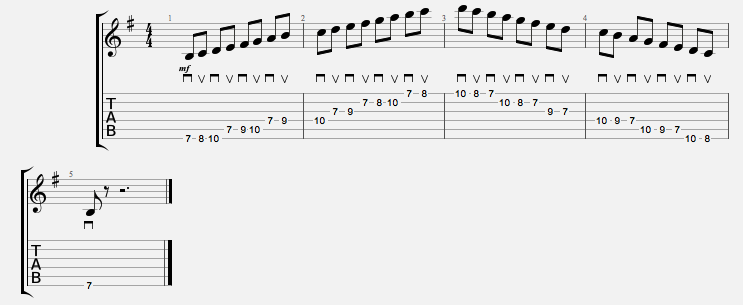
Position four starts on the 5th note (5) of the scale “D”
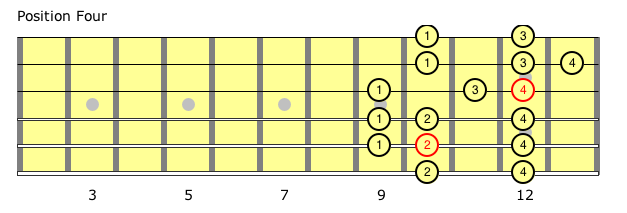

Position five starts on the 6th note (6) of the scale “E”
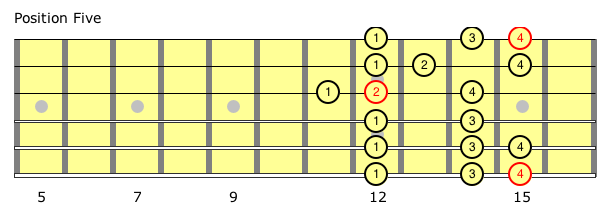
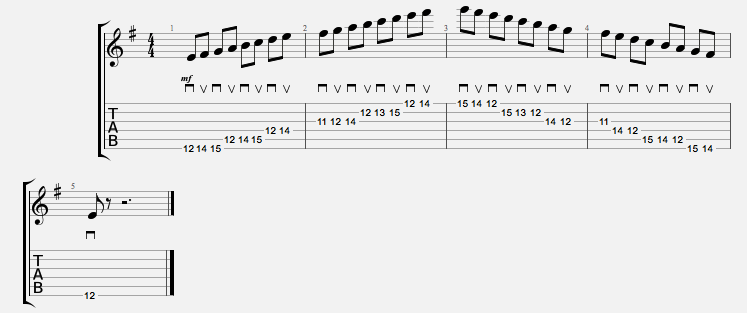
Important notes when practicing:
- Practice the positions slowly paying particular attention to your technique. Always use your fingertips and never bar your finger at any point while practicing these positions.
- Alternate your picking when playing through each position.
- Memorize the positions one at a time. It’s much easier to learn each position one at a time versus running through all five positions then starting again at the top.
- Once you have the major scale positions memorized in G, make sure to practice them in all keys so you have them at your fingertips no matter what key you’re playing in.
- It is important to keep in mind that we are playing the same set of notes. We are just playing them at different locations on the fretboard and in different octaves.


